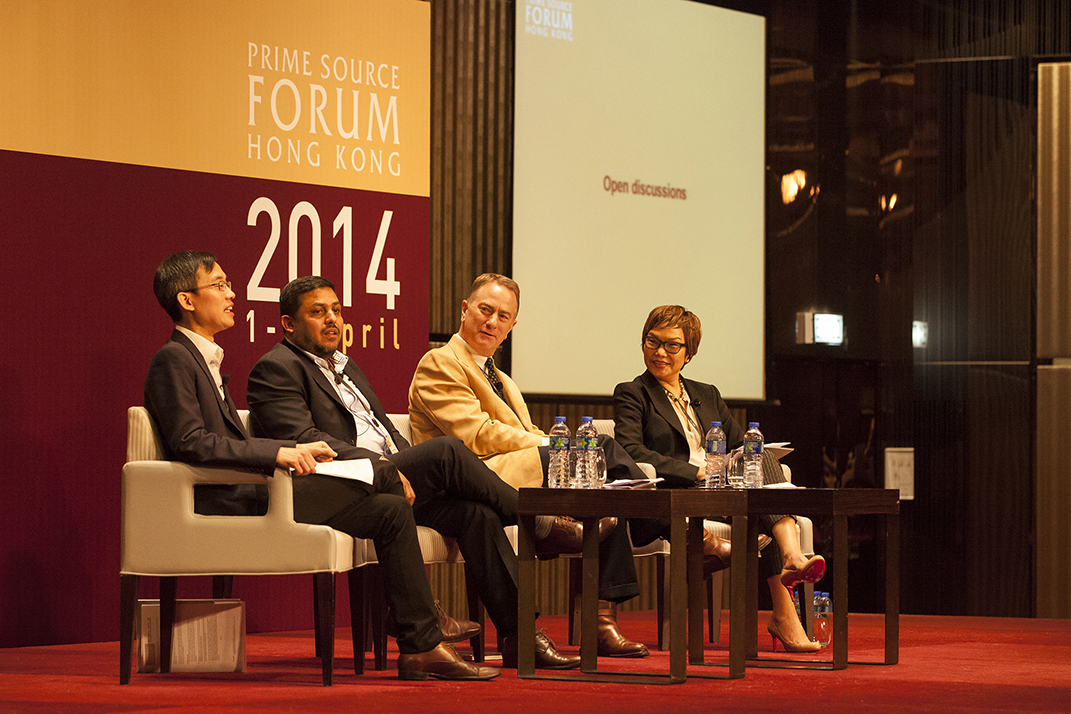Prime Source Forum, the annual forum for the global fashion industry, for nine years has been building its strength and confirming its standing as the most important gathering for apparel industry people to openly discuss the important global issues on hand within the industry. The 9th edition took place in Hong Kong.
A rich 2 day program included 5 topic sessions, 4 model & case studies, a keynote speech on Bangladesh, snapshot on brand building and ample tea break time for interaction among the delegates and for them to study the products displayed. In addition a half day forum on sustainability was held concurrently on the 2nd day. 38 endorsing organizations, 11 sponsorships and 7 media outlets provided a solid platform for the Forum.
The key topics were sustainability, changing trends in sourcing, alternatives to China as a supplying country, continuous replenishment supply chain management, technology and innovation to business success
Following the welcome speeches by officials, Delman Lee of TAL Apparel shared his view of the importance of continuous replenishment by responsive supply chain solutions. However trust and transparency critical for its success.
There is no one-size-fits-all solution was the message delivered at 1st session on the role that sourcing offices play today. The future role of the sourcing office is more about managing relationships along the supply chain. Consolidation will and must happen. There will be winners and losers; that is inevitable. Yet the emergence of small and niche brands will become more prevalent which can also help fortify the middleman’s role.
The case study presented by Aaron Mora of VF Asia Ltd focused on how to maintain profit margins in view of increasing cost in raw material and labour cost. Moving away from China to Asean countries without improved productivity would not work. Instead better sourcing is a way and automation also helps. It is important that responsibility is shared amongst suppliers, vendors and buyers.
Similarly speakers at Session 2 agreed that China will not be replaced that easily as a supplying country as its production ability is still strong. In “alternative sourcing countries” manufacturers are still facing challenges like the supply of raw material, infrastructure, political stability, lack of experienced workers, logistic/speed to market.
However also China must now change its direction to go for technology & innovation and continue to improve quality, partly even moving up towards high-end products. Its domestic market will grow and the coastal region will remain strong for the export market. Middle and low end product manufacturing will move inland. A small percentage of the stronger companies will “step out” (expanding off shore) to Asean& African countries. Overall an integrated and effective supply chain is the key to success in increasingly globalizes production structures.
Session 3 unveiled the potential of alternative supplying countries. Growth in Asean is fueled by preferential trade policies. Particularly the TPP, now still in debate, can push spinning and weaving to develop in Asean. Hence a complete supply chain would happen in Asean and buyers will then be less reliant on China.
Despite the great potential, running off shore factories is not easy; that was the conclusion of the 2nd Case Study presented by Andrew Lo of Crystal Group. He pointed out how different cultural and political contexts are and thus careful considerations must be made. Especially working with the unions is a helpful strategy for running a smooth operation.
Keynote speech by Atiqul Islam, president of the Bangladesh Garment Manufacturers and Exporters’ Association, gave a strong push for his country’s garment production great potential. Especially safety and control of the production process is an important topic. After the Rana Plaza fire disaster, production conditions were widely discussed. The ILO came up with the Better Watch Program. However at the same time Bangladesh needs to improve efficiency in order to remain price competitive.
Likewise discussions and speeches in other sessions stressed the importance of sustainability and stregic planning of processes. Additionally it became clear that more than ever the costumer and his specific needs play the central role and thus have to be accounted for. Brands have to be emotional and accessible but at the same time highly functional to succeed in changing markets.



